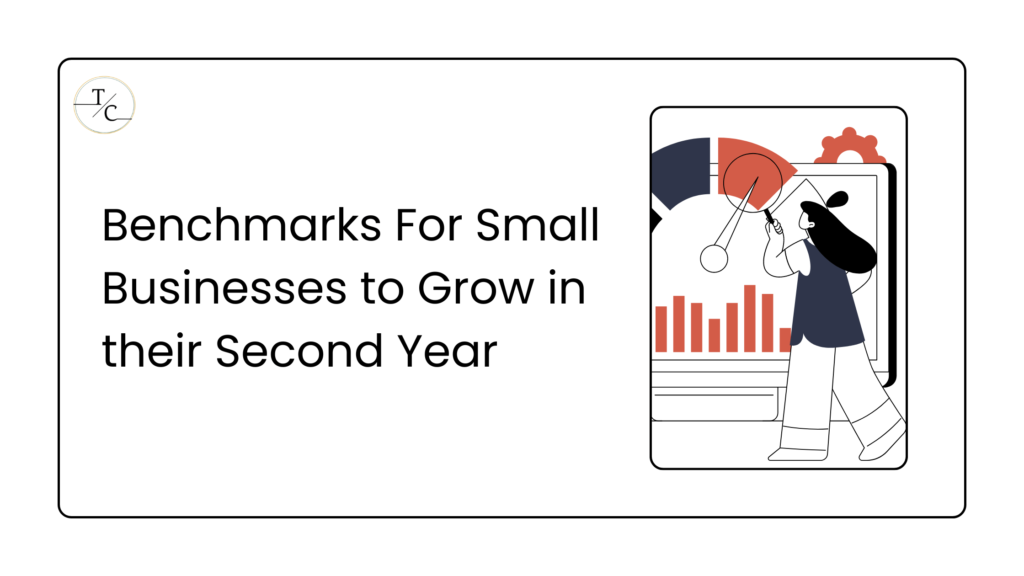Small Business Challenges and How to Overcome them

Estimated reading time: 7 minutes
Small Business Challenges and How to Overcome them
This is the second blog in our series called: “Setting Benchmarks for Small Businesses”. Our team works with small businesses to facilitate their financial growth. We have observed over the years that the second year of small business in Ontario is a crucial milestone for the respective entrepreneurs.
The initial excitement begins to decrease, and you get to acclimatize with the realities of running a business. Unfortunately, about 20% of small businesses don’t make it past this pivotal stage. Therefore, if you take the time to understand common small business challenges given below, & implement strategies to overcome them, you can significantly increase your chances of success.
Deep Market Analysis
One of the first tasks for any small business owner in their second year is conducting a deep market analysis. This means:
- Understanding your target audience (use personas and empathy maps)
- Analyzing competitor strategies (use developers/SEOs etc. to chart out how your competitors grow)
- Staying ahead of industry trends (use social media mindfully to recognize trends and jump on the ones you can use for your growth, early on)
By gaining insights into the market landscape, you will both be able to identify potential pitfalls and capitalize on emerging opportunities. This should be your ideal target for you in the second year of your Small Business if you are serious about having it grow into a corporation one day. Set a benchmark for organic growth with solid research backing it, so you can keep growing for the near future.
Assess Your Business Direction
As your small business progresses into its second year, it is essential to review (and revise) your growth trajectory regularly. This involves evaluating your small business’ performance, identifying departments where you can improve, and adapting your strategy accordingly.
Operations can take most of your time and that is understandable too, but by listening and responding to the market, you can position your business for long-term success in the years ahead. Make sure you are available for that.
Ensure Cash Flow Stability:
Cash flow management remains a top priority for small businesses all-round the year.
As you get ready to deal with the small business challenges of the second year, having enough “dough” to play around with becomes increasingly important.
But the only way you can ensure the cash doesn’t run out is by monitoring cash inflows and outflows meticulously, optimizing payment terms with suppliers, and implementing strategies to accelerate your receivables.
By maintaining a healthy cash flow, you can pass even the most troublesome financial fluctuations and ensure the stability of your operations.
We maintain regular cash flow forecasts for many small businesses in Ontario. Feel free to give us a call if you need this level of dependable financial clarity in your business.
Obtain Sufficient Working Capital
Capital on hand is the lifeblood of any growing business. In the second year of your small business, you could secure adequate funding so you can expand your initiatives and capitalize on emerging trends in the industry.
It depends on your business location and personal preference whether you choose to grow through traditional financing avenues or alternative sources such as venture capital or crowdfunding, but whatever way you choose, obtaining sufficient working capital is essential for sustaining growth as a small business in Ontario.
Increase Market Presence
Expanding your market presence is the key to capturing a larger market share. It is one of the most difficult business challenges. But the good news is that there is no one standard way to do it. The ground is open for you just as much as it is for any other entrepreneur. You can use methods like:
- Leveraging various marketing channels
- Enhancing brand visibility
- Engaging with your target audience in a timely manner to increase your presence in the industry and get people to start and keep talking to (and about) you.
- Once you build a strong brand presence on the internet and foster meaningful connections with your customers, you will have a loyal customer base that drives you more customers, i.e. sustained growth.
Speak Louder!
In today’s digital age, strengthening your online visibility is super-important for small businesses looking to scale their operations.
This involves (but is no way limited to) leveraging social media platforms, optimizing your website for search engines, and engaging in content marketing initiatives. By increasing your online visibility, you can reach a broader audience and generate more leads, thus fueling your business growth.
Listen to Your Customers
Customer feedback is invaluable if you are seeking to improve your product or service. It also helps you enhance the overall customer experience. In the second year, you should go after customers to actively solicit feedback through surveys, reviews, and direct interactions. You can build stronger customer relationships by listening to their concerns and addressing their needs.
Join Networking Groups and Events
Networking remains a powerful tool for small businesses in Ontario looking to expand their professional connections and access new opportunities. Joining online networking groups and attending industry events allows you to meet like-minded entrepreneurs, exchange ideas, and build strategic partnerships.
The cool thing about expanding your network in you open doors to potential collaborations. These collabs are the fuel you need to grow your small business.
Build Capacity for Growth
As your business grows, so should your team. Hiring and retaining top talent remains important throughout the second year as you expand your operations and take on new clients (and you run out of recommendations inventory).
Building a self-disciplined and capable team requires creating a positive work culture, providing opportunities for growth and development, and offering competitive compensation.
A strong relationship between you and your employees is essential for creating an active work environment. It drives employee engagement where people are proactively working on their own.
Pro Tip: Recognize and reward employee contributions and promote open communication to help build a motivated and cohesive team.
Is it Okay to Outsource startup operations?
If you want to keep your team lean and focused on core-competencies only, outsourcing the non-core departments could be an accelerator for growth. As the world gets more connected, outsourcing has become a smart solution for small businesses looking to streamline operations while accessing specialized skills.
Outsourcing non-core functions such as IT support, marketing and financial management of your business frees your team to focus on the core competencies.
This in turn helps you keep a lean team and grow fast. You could outsource all your financial management requirements (bookkeeping, tax prep and filing, payroll, cashflow management etc.) to CFOs for small businesses based in Ontario. They are skilled in providing valuable insights from your financial data, which helps you plan and grow strategically.
Pros and Cons of Outsourcing
Pros
- Cost savings
- Access to experts of the field
- Flexibility of scheduling
Cons
- Quality control
- Communication barriers
- Exposure to data-security risks.
If you decide to outsource some aspects of your small business, you need to follow a structured approach to ensure successful outcomes. Establish clear expectations beforehand and select the right outsourcing partner.
Before outsourcing, you need to document your requirements, so you know exactly what you need the outsourcing partner to do.
By following these steps, your small businesses can minimize risks and maximize the benefits of outsourcing.
Patience=More Profitability
While we all want profits, it’s important to know that achieving profitability takes patience. Rome wasn’t built in a day, so you need persistence in your second year.
You have already done the hard yards and all that’s left to do is keep moving forward. Most small businesses become profitable in 2 to 3 year. The exact time, however, depends on various factors such as business size, industry dynamics, and the effectiveness of your business model.
If you need help keeping the financial side of your small business up to date, schedule a free consultation and we can give you a callback at your preferred time.
